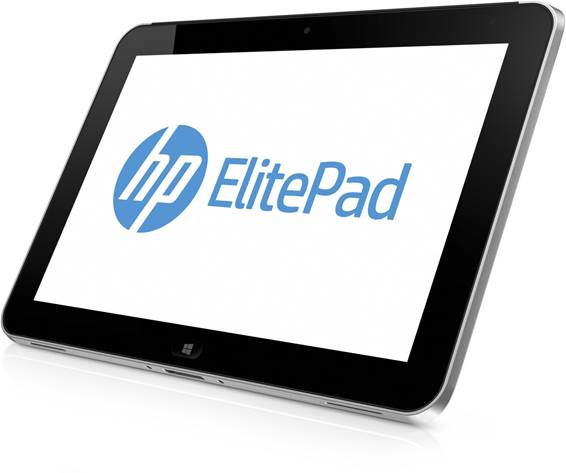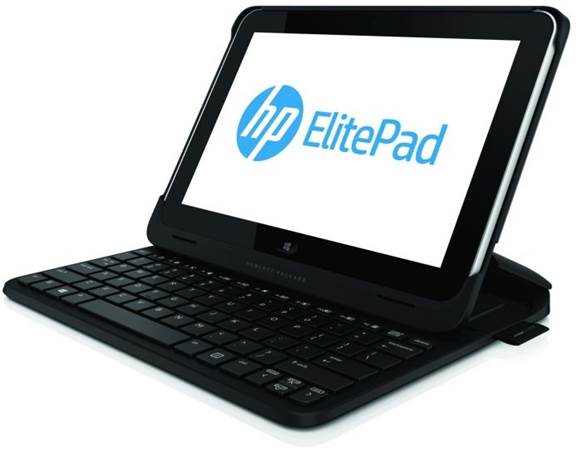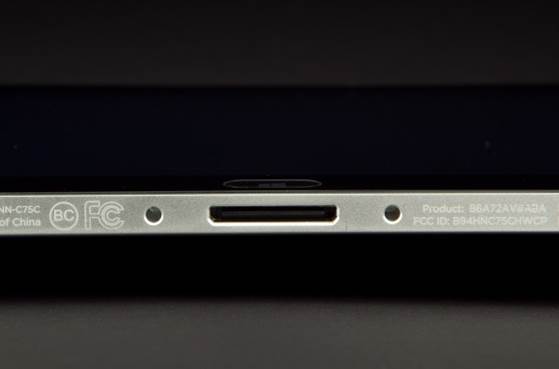On paper, the ElitePad 900 has almost
everything that we expected from a business tablet: pen support, security
features such as TPM and a dock with Ethernet and extra ports. It's offered
with a wider-than-usual range of accessories, including useful goodies like a
second battery and keyboard case. Not to mention it is one of the best tablets
we've seen, and of course that is not what we require from enterprise tech.

HP
Elite Pad 900
HP's PC business lines are always amazingly
pretty. Please do remember, good looks are not located high on our list of
criteria, but at least they make a strong impression. Now when the company was
more comfortable with the tablet (and especially Windows 8), HP was selling
ElitePad 900, its first Windows 8 tablet designed for the enterprise. Like all
those EliteBook laptops that came before it, it has metal frame that is not
only pretty, but also meets the military's MIL-Spec standards too. On the other
hand, it has everything you expect from a business computer: support for pen
input, mobile broadband and security features such as TPM. It is also sold
along with many accessories, including some cases that add further
functionality besides just protection from scratches. With a starting price of
$699 for the 32GB model, it is slightly more expensive than its competitors.
Would this also means it's a little bit better too?
Hardware

ElitePad
is the most attractive tablet that HP has ever made
We will say this without hesitation:
ElitePad is the most attractive tablet that HP has ever made. And it's for the
enterprise. Stealing the show is that machined-aluminum rear, with its flush
volume rocker and smooth, hard finish. Indeed, it looks so pretty that it was
present in the grand campaign aired during last year's Summer Olympics (not the
place for those ugly devices). In contrast, there's a black, soft-touch panel
on the top of the back cover, around where the antennas and NFC chip are.
Typically, that might make for a mismatched design but in this case, the
contrast between the cold metal and rubbery accent works quite well.
The nice thing of aluminum is its
lightweight: with 1.38 pounds, ElitePad is very easy to hold, especially
because the chamfered edges create a natural resting place for the thumbs. (For
reference, the tablet weighs 0.06 pound less than the iPad 4, which is already
pretty portable.) Like all previous HP's EliteBook laptops, it is designed to
withstand drops, water spills and any other accidents that may occur at the
workplace. (The IT guy just wanted to refresh your computer every few years,
you know?). In particular, the tablet meets military's MIL-SPEC-810G standard,
covering drops, vibration, sand, heat, cold, rain and humidity. We cannot
guarantee the aluminum surface will not get dirty - we had one small scratch
ourselves - but at least the machine will remain usable.

Lack
of ports on the device means that you will probably rely more on the
SmartJacket option
Our tour of the ports will be fairly brief,
and it is not necessarily a good thing: lack of ports on the device means that
you will probably rely more on the SmartJacket option, which adds a lot of
weight. On top, you'll find the power button/lock on one side, the headphone
jack and screen-orientation lock switch on the other. Located on the left is
the volume rocker, which isn't actually on that chamfered edge but rather, on
the back side. Same deal with the SIM slot and microSD reader, which sit behind
a pin-accessible door on the right.
As we have said, the NFC chip is located in
the back cover, towards the top where that black rubber trip is, it is clearly
marked by the NFC logo. Bottom edge is home to dual speakers, along with the
docking connector you will need to make use of all those optional accessories.
There is an 8MP camera at the back, paired with an LED flash, along with a
1080p webcam up front.
Display and Sound
HP has chosen to match the nice design with
an equally nice display. What we have here is a 10.1-inch IPS screen made of
Gorilla Glass 2. The brightness rating tops out at 400 nits, which is
preferably close to what you would have on a tablet today (the product of Asus
seems to be the exception). The only thing keeping this from being a truly
top-notch screen is that the resolution is reduced to 1,280 x 800, and it's not
even entirely HP's fault: after all, the Atom processor does not support
resolutions beyond 1366x768. In addition, the company said that business
customers do not require a higher resolution. And who are we to argue with HP's
marketing department?

A
10.1-inch IPS screen made of Gorilla Glass 2
In short, it's a cute display. As you wait,
the colors lose some strength when viewed from the side or when the tablet is
facing upwards. However, regardless of the angle, the screen is always easy to
read, especially when you maximize the brightness. We would also add that
glossy screen reflects surprisingly little light -- or, at least, the screen
glare that is there doesn't get in the way.
And in case you're wondering, ElitePad
supports pen input, like the other Windows 8 tablets aimed at the corporate
world. However, because the digitizer is made by Atmel, not Wacom, you can't
just sub in any old pen if you lose the one you bought from HP. Pens are sold
separately for $ 49 dollars and indeed, we do not have a chance to test the
ElitePad with it.

HP
ElitePad 900’s speaker
At this point you may have noticed that
most of HP's consumer PCs have Beats Audio on board, but because the ElitePad
is a business computer, it has SRS technology. Indeed, without Beats' EQ
settings to emphasize the low notes, the sound here is fairly constrained. It
proved to be the worst at the highest volume setting, but fortunately the
speaker setup is loud enough that you can easily keep the volume around 40 /
100 if you're listening by yourself. And if you're on a conference call and
need bigger sound, nobody cares if your colleagues sounded somewhat small.